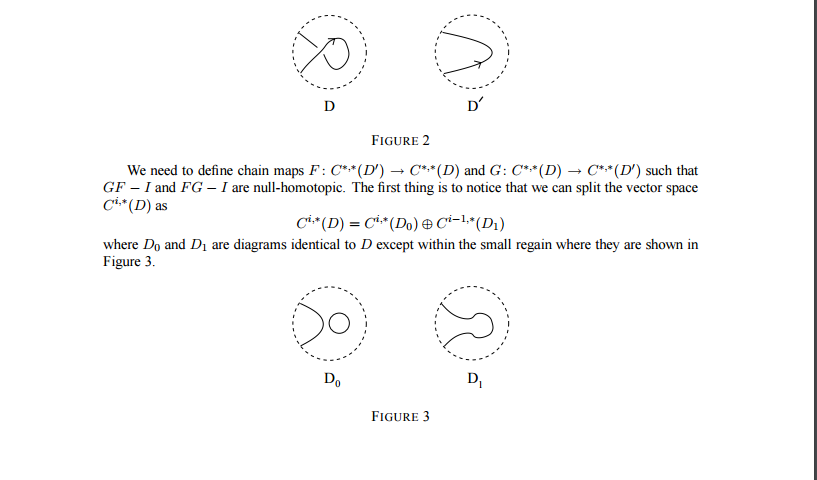I am studying Khovanov homology from five lectures on Khovanov homology
and I want to try to show Khovanov homology is invariant under first Reidemester move but I cannot understand how we can write
$C^{î,*}(D)=C^{î,*}(D_0) \oplus C^{î-1,*}(D_{1})$.
where $D,D_0,D_1$ as in the picture below

For example again in this paper it takes $D$ as Hopf link and I'm trying to write it as a sum but I cannot because if we take $i=-2$ then $C^{-2,*}(D_0)=0 $ and $C^{-3,*}(D_{1})=0$ because they only have 1 negative cross, but if I take $C^{î,*}(D)=C^{î+1,*}(D_0) \oplus C^{î,*}(D_{1})$ it is true. Can you say where is my mistake?
